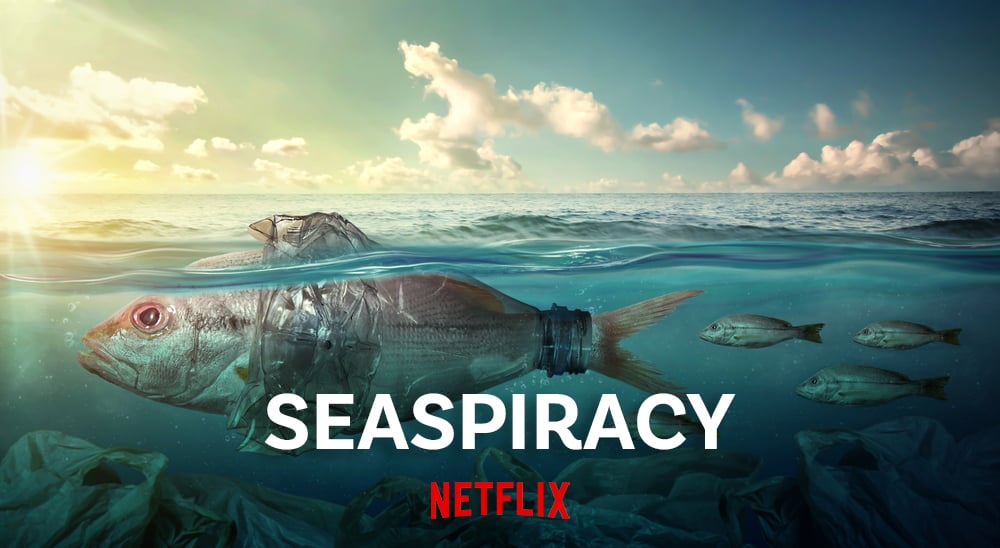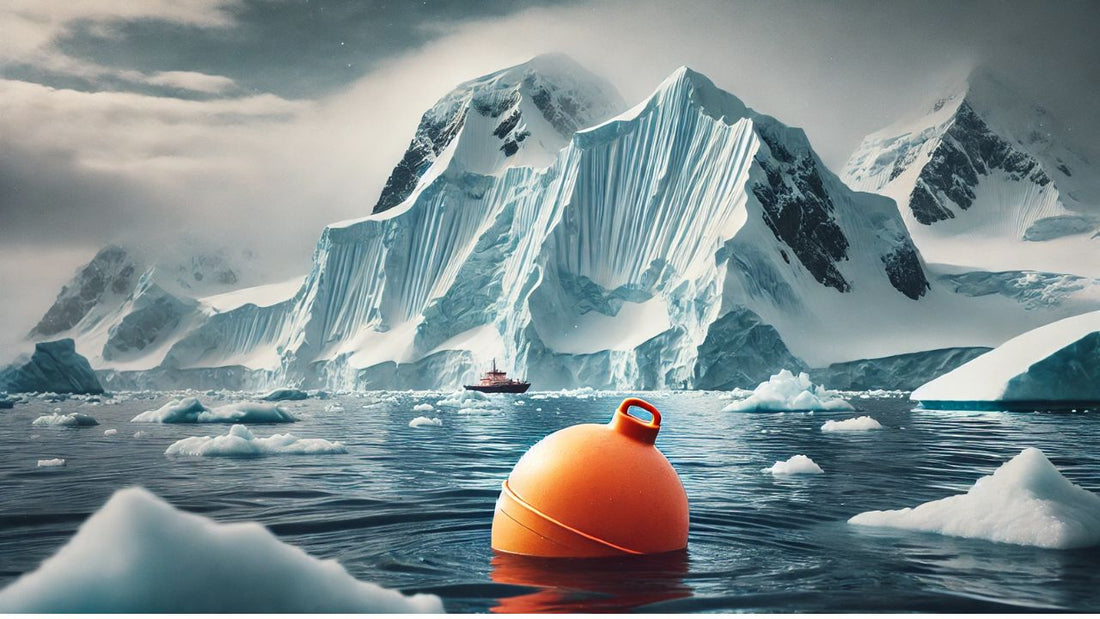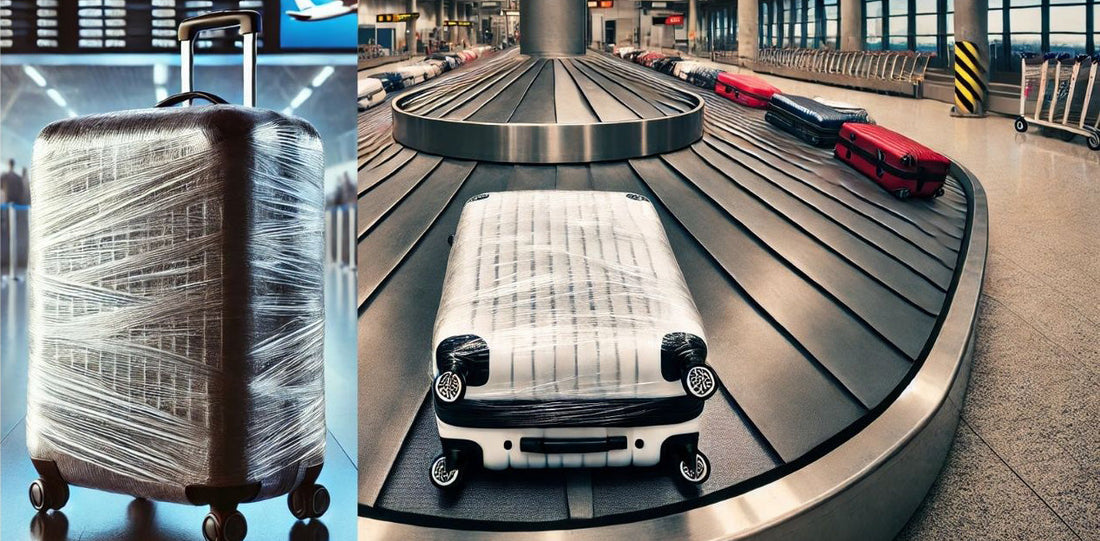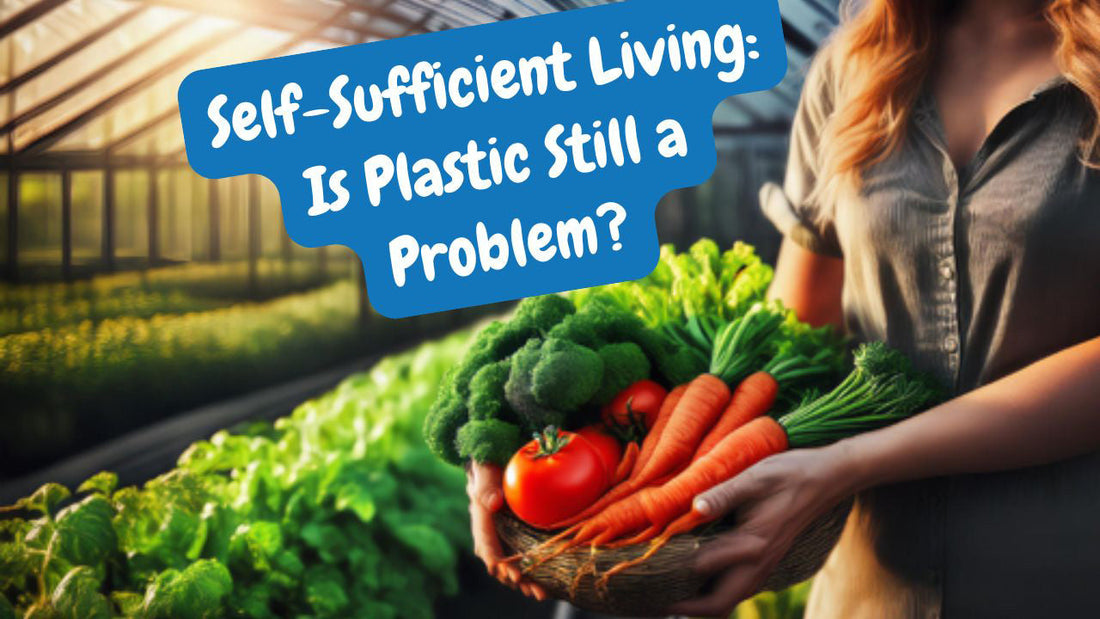The fight against plastic pollution?
When I initially saw the trailer for Seaspiracy it piqued my interest. It highlighted all the important environmental issues surrounding our oceans; interviews with well-known environmentalists; Paul Watson, Sylvia Earle and snippets from Rick O’Barry’s documentary The Cove along with scenes of plastic washing up onto our shores.
Overfishing, saving our coral reefs, and cetacean captivity are all issues that are close to my heart, but closer yet is combating the use of single use plastic. The trailer for Seaspiracy definitely got my attention.

Seaspiracy and Plastic Pollution
After the initial documentary intro, Seaspiracy begins with scenes of whales cruising majestically through the ocean, while videographer Ali Tabrizi watches from the shore. It talks about this love of the ocean and his desire to learn about the beauty beneath the sea.
It doesn’t take long before the documentary switches from beautiful ocean scenes to images of whales washing up on the shore.
“Pregnant whale died with 50 pounds of plastic in her stomach.” “Baby dolphin found dead with stomach full of plastic trash.” Over and over again the screen is filled with headlines from news outlets depicting stories of whales and dolphins, filled with plastic, washing ashore.
While the world is well aware of plastic pollution, the message about reducing single use plastic is still not making much of an impact. We continue to choose our convenience of plastic over the knowledge that using plastic at an alarming rate is causing harm to both the oceans and our land.
With images depicting take away containers and plastic drink bottles being thrown into the garbage, Tabrizi comes to the realisation that he was a massive part of the problem. In order to do his part to curb plastic pollution he “became the plastic police.” His mission was simple, and involved steps we all can, and should, implement on a day-to-day basis:
- Carry a reusuable water bottle
- Stop using plastic toothbrushes and straws
- Take your own bags to the store
- Carry a reusable coffee cup
- Pick up single use plastic when you see it
It was a soft intro into the harm that single use plastic is causing. Seaspiracy then takes a swift turn. Ali along with wife Lucy pack their bags and head to Japan to find out how big of a threat Japan’s whaling practices were compared to plastic.
Plastic and Dolphin Drive Hunts
 We are now catapulted into Rick O’Barry’s domain, exposing the horrors of the Taiji dolphin hunts.
We are now catapulted into Rick O’Barry’s domain, exposing the horrors of the Taiji dolphin hunts.
For those unaware, the dolphin drive hunts are a means of capturing dolphins, placing them into tiny enclosures, training them and selling them globally to marine parks as a means of entertainment.
It’s argued that dolphins used in many marine parks today don’t come from these dolphin hunts, but rather from breeding of dolphins that are already in captivity. However, it’s undeniable that dolphins in marine parks came from the ocean to start with.
Captivity leads us back to single use plastic. Keeping these animals captive requires a ton of plastic: fish caught from the ocean — frozen and packaged in single use plastic as well as all the plastic required for medical treatments and breeding these animals.
We get a short glimpse of a crowd at a marine park and it's safe to assume that at some stage the crowds were hungry and thirsty. What are the majority of the food and beverages consumed at these venues packaged in? Single use plastic. There’s always a plastic connection.
While O’Barry's reference to dolphin drive hunts and saving the ocean may not have been directly related to ocean plastic, plastic pollution isn’t just the size of a football field.
Plastic is used by every single person on this planet, both on land and on the sea. I’d wager a bet that even the North Sentinelese Tribes that have no contact with the outside world encounter plastic on a regular basis, with it being washed up on their shores.
Overfishing and the Plastic Connection
 The documentary shifts its focus to overfishing blue fin tuna and shark finning. Apart from the appalling number of shark fin products being sold in the markets, the other glaring problem was all the single use plastic these products were packaged in. Rows and rows of dehydrated fins, packaged in single use plastic. Over 94% of which will make its way to either landfill or the ocean.
The documentary shifts its focus to overfishing blue fin tuna and shark finning. Apart from the appalling number of shark fin products being sold in the markets, the other glaring problem was all the single use plastic these products were packaged in. Rows and rows of dehydrated fins, packaged in single use plastic. Over 94% of which will make its way to either landfill or the ocean.
Seabirds and the Plastic Connection
The documentary now moves to professor Callum Roberts, a Marine Scientist, who notes that the abundance of seabirds has decreased by about 70 per cent over the past 70 years. Roberts goes on to explain that the birds lightly dip into the ocean to feed off small fish on the surface, and as there are less fish for them to feed from, the seabird numbers are seeing a decline.
What’s the plastic connection that’s missing from this story? Often those pickings are not little fish at all — but instead, bits of plastic. This too, is killing birds that feed from the ocean.
Labels, Sustainability and the Plastic Connection
 The documentary moves to product labels and specifically targets the Dolphin Safe label in regards to dolphin protection. The film argues that consumers have being purchasing products specifically due to this labelling, trusting that the logo meant no dolphins were harmed during the tuna fishing process.
The documentary moves to product labels and specifically targets the Dolphin Safe label in regards to dolphin protection. The film argues that consumers have being purchasing products specifically due to this labelling, trusting that the logo meant no dolphins were harmed during the tuna fishing process.
It’s emphasised that labels are purchased and there’s no guarantee that the products labelled “Dolphin Safe” means that no dolphins were killed while harvesting the tuna.
“Follow the money” Tabrizi says. He then pulls up a website that states:
“The Marine Stewardship Council was founded in 1995 by the World Wildlife Fund and Unilever.”
However, the film only highlights Unilever as a problem. WWF’s logo flashed briefly on screen prior to talking about fish farms, there was no mention of their label support, and money making ventures. The WWF are also funded by labels for “sustainable” farmed salmon in Australia. And just like Unilever, to quote Tabrizi, “the more blue ticks they hand out — the more money (WWF) make.”
What’s the plastic connection? Products marked with both “Dolphin Safe” and “Sustainable Seafood” labels are often packaged in single use plastic, of which very little will be recycled.
The other missing plastic link: producing feed for these fish farms and keeping them medicated and coloured requires, yet again, more plastic.
Plastic Fishing Nets
 Are they really reluctant to talk about fishing nets?
Are they really reluctant to talk about fishing nets?
Ocean Cleanup talks about fishing nets, Parley for the Ocean talks about fishing nets (ironically Cyrill Gutsch, founder of Parley for the Oceans was interviewed in the documentary — yet he is not questioned on the apparent reluctance to discuss fishing nets as a problem), Greenpeace talks about fishing nets.
Monbiot states that 46 per cent of ocean plastic comes from fishing nets. Even if this statistic is correct, there’s still 54 per cent of plastic in the Great Pacific Garbage Patch coming from other plastic.
However, I would agree with Monbiot when he asks: “Isn’t it terrible, all our cotton buds and plastic bags are swirling around in the great pacific garbage patch?” Yes it is!
Plastic Straws
Plastic straws may only account for 0.03% of plastics entering the ocean. However, if it wasn't for this viral video of one single plastic straw entering the nose of one turtle, we likely wouldn't have seen the outpouring of campaigns against plastic straws. Therefore, I would deem the video a success.
Since watching the 8-minute clip many people got behind these campaigns and vowed to stop using not only plastic straws, but other single use takeaway items. In fact, without the awareness that plastic straws pollute our oceans, many people would not be watching the Seaspiracy documentary today.
Gaining awareness about what may seem like a small issue (turtles dying due to plastic) and in turn reducing your use of certain single use plastic items, isn't a bad thing. In fact it’s a damn good place to start.
Recreational Fisherman
“I have a hard time accepting that a fisherman on his little fishing boat could be causing all this damage, so what’s the deal?”, Tabrizi asks Monbiot.
Monbiot takes us off to another place, one that doesn’t address recreational fishing, suddenly we are propelled back to commercial fishing.
Most recreational fisherman would agree there needs to be greater restrictions placed on large commercial fishing vessels. If the main agenda for this film is to get people to stop eating fish and adopt a vegan lifestyle, it’s very unlikely to happen. Which is possibly why the Plastic Pollution Coalition became defensive when asked why “stop eating fish” was not listed on their website. That isn’t the agenda of the Plastic Pollution Coalition — their agenda is for their message to reach the masses. The message:
“To work towards a world free of plastic pollution and its toxic impact on humans, animals, waterways, the ocean, and the environment.”
Plant Based Alternatives
 Seaspiracy ends with a segment on plant based alternatives. They sound and look delicious. There was only one problem — many of those options presented were, you guessed it, packaged in plastic. Yes, the packaging stated it was packaged in compostable plastic, but when it comes to vegan food that’s not always the case, and as I always say.
Seaspiracy ends with a segment on plant based alternatives. They sound and look delicious. There was only one problem — many of those options presented were, you guessed it, packaged in plastic. Yes, the packaging stated it was packaged in compostable plastic, but when it comes to vegan food that’s not always the case, and as I always say.
“It won’t compost if you don't compost it.” — Catherine Earle
While I admire Ali and his wife Lucy for having the courage and tenacity to dig deep into these topics, I feel it missed the mark on really telling the story about how the oceans work, why it’s important for us to protect them and shine a brighter light on the issues surrounding commercial fishing.
If the film’s mission was to encourage more people to go vegan, it hit its mark. Almost every comment on social media regarding Seaspiracy is related to veganism — not about the issues surrounding plastic pollution or around commercial fishing and fishing nets. However, Seaspiracy didn’t provide a solution to the problem of overfishing, aside from adopting a vegan diet.
A better solution? Ask people to make conscious decisions and question their food supply — including those that are already vegan.
Where has your food originated from? What is your food packaged in? Is that packaging sustainable? Is it recyclable or compostable? If it’s recyclable, will it actually get recycled? If it’s compostable, are you going to compost it?
These questions can, and should be applied to all our purchasing decisions. When we start making conscious choices, our options start shrinking and the reality of sustainability at the rate we are currently consuming, will be a wake-up call in itself.
I believe Seaspiracy would have been more compelling if it stuck to the issues surrounding commercial fishing or actually followed the connection between fishing and plastic pollution, rather than a documentary of fishing versus plastic, and which one is a bigger problem.
It was unnecessary to point fingers at organisations that also are working hard at trying to curb plastic pollution and in turn help save our oceans. Plastic pollution and overfishing are both important issues, one does not override the other.
A final word from the inspirational Sylvia Earle:





